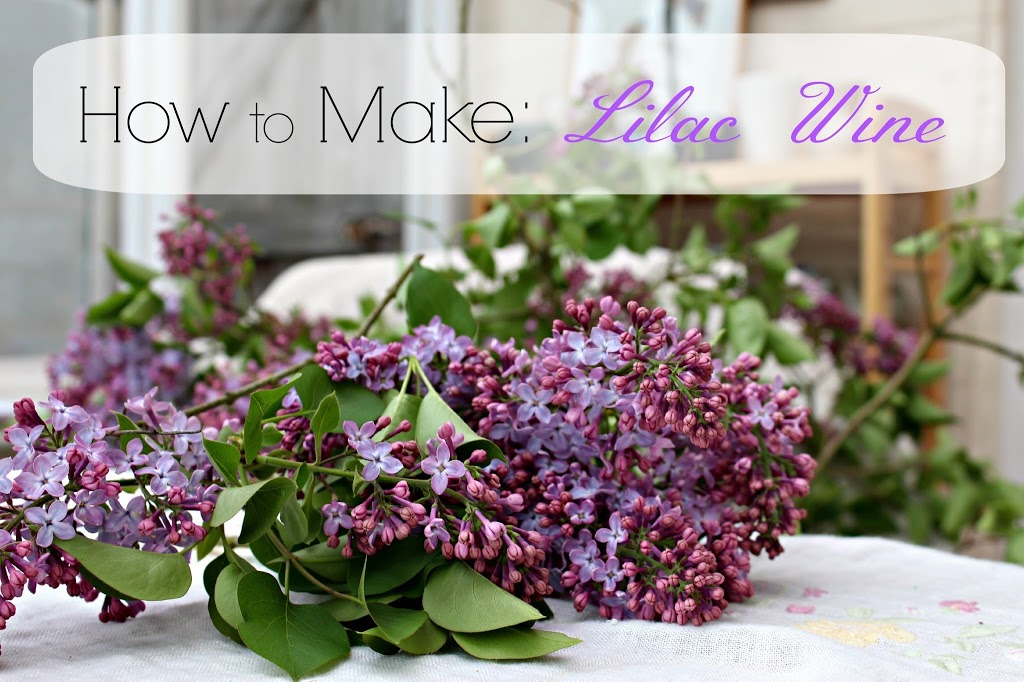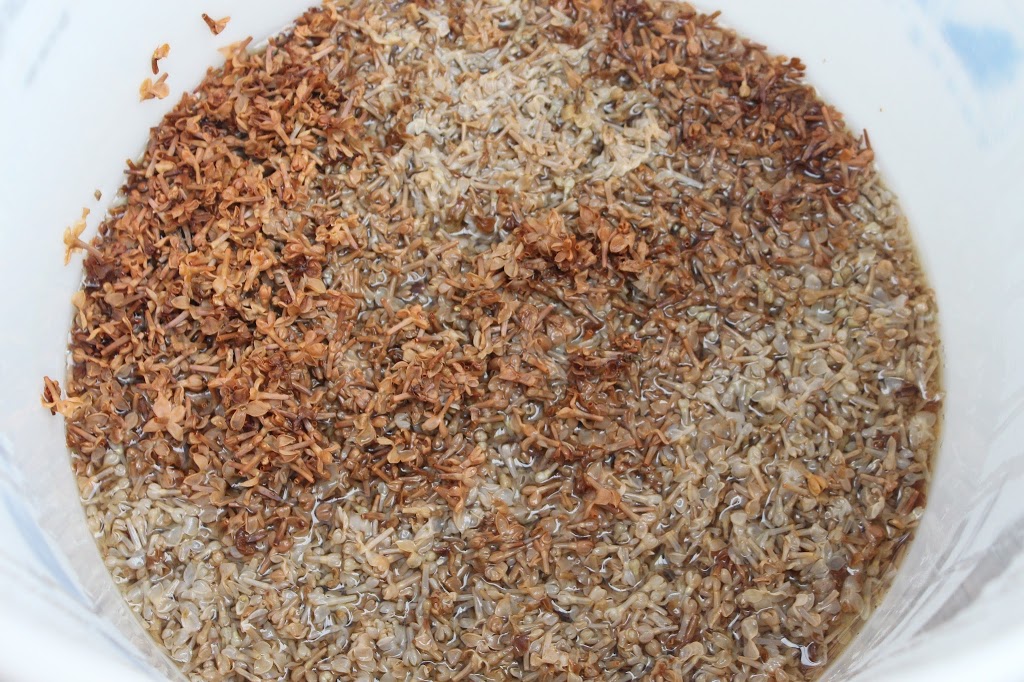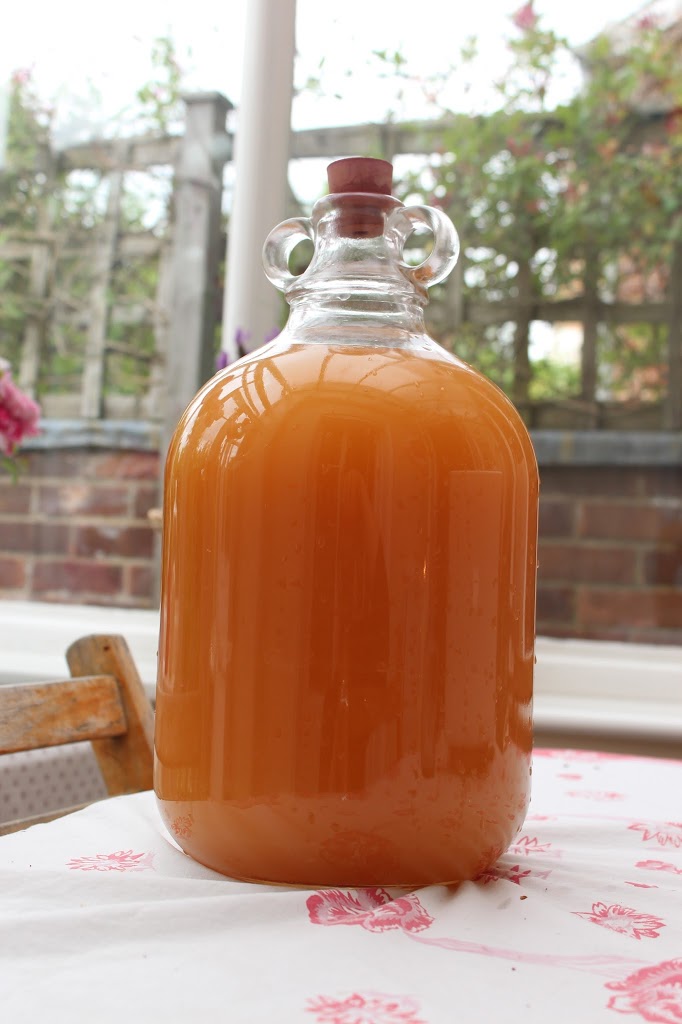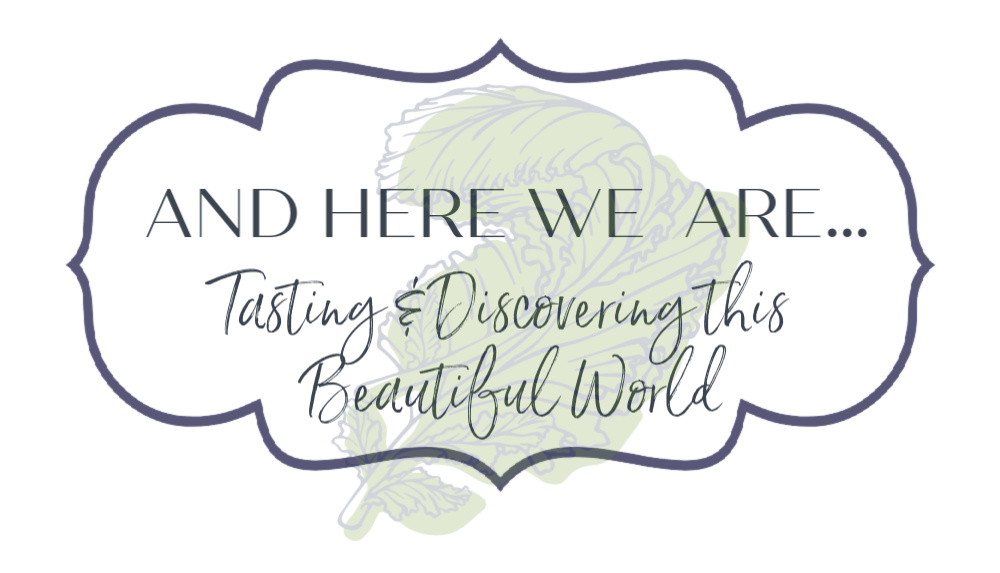Let’s make some Lilac Wine. I am not completely done with the process, but it’s going well and I’m confident enough to share what I’ve done. I roughly followed the instructions from here. Start now by saving your lilacs. You can store them in the freezer until you have enough, then give them a second life by making Lilac Wine.

Making Lilac Wine
Here’s What You’ll Need
- 3-1/2 quarts lilac flowers, fresh or frozen
- 2-1/2 lb granulated sugar
- Juice of 2 lemons
- 7-1/2 pts water
- 1 tsp yeast nutrient (You can order it here)
- Champagne yeast (You can order it here)
In terms of supplies, there are a few basic items you should have. You can often find these on craigslist, and definitely at a brewing supply store, or you can order them on amazon.
- Fermentation bucket
- Demijohns
- Airlocks with rubber stoppers
- Siphon hose
- a funnel
- Wine bottles (we usually just sanitize our old ones), corks, and a corker, OR swing-top bottles
- Sterilization solution

What to Do:
1. Make Lilac Tea. Bring your water to a boil. Put your flowers in your (sterilized) fermentation bucket, pour the boiling water over them, and put the lid on. Leave them to steep for 48 hours.

2. Pour the tea into your fermenting bucket. Use a strainer to remove the petals, and press on them to get the most flavor into your liquid.

3. Add sugar, yeast nutrient, and lemon juice. Stir these in until they are dissolved, then sprinkle the yeast on top. Don’t stir the yeast in. Cover tightly with the lid, and let it ferment for 7 days.
4. Using a funnel, pour the liquid into your glass carboys and put the airlock on them.

5. Ferment, rack, repeat. After fermenting for one month, rack your wine. This just means siphoning it into another sterilized demijohn. I have done this at least twice, maybe three times now. My wine is still cloudy, so I will keep waiting and racking. One thing I will note about my own process is that I started with less sugar then recommended here, and when I tasted it, realized that it had quickly eaten all of the sugar and was getting too dry too quickly. I have added sugar with each racking, but I think if I had started with these recommendations, I probably would not have had to. And just a warning here– if you DO add sugar to this, it will foam up really fast because of the type of yeast. I made a big mess!
6. When your wine is pretty clear, it’s time to bottle it. I’m at month 3 and not ready yet, but it tastes really good and promising! Since we are using champagne yeast, you will want to make sure you’re using swing-top bottles to release some of the excess carbon dioxide, as needed. Age for 3-6 months after bottling, and then enjoy!I will update this post when I bottle my wine, and I’ll tell you all about it.
Now, go get started with this lovely brew! You will be so glad you did so this winter, when you need to taste the promise of springtime.



So Tai decided, as lilac season sprung into a frenzy, that we must make lilac wine. The only challenge was where to get enough flower heads. food and wine matching
How did your wine turn out? I’m super curious.
It came out really dry and aromatic! I could have definitely used a bit more sugar, but good!
From what I understand, if you add more sugar (past a certain point) then the end result will *not* necessarily be sweeter. It will have a higher alcohol content, however. The sugars turn to alcohol. The more sugar you use, the stronger the drink will be. The yeast can only handle so much sugar, so you can’t add too much or the yeast will die. The dryness of the wine also has to do with the length of time it takes to finish out the wine. The longer it sits around, the drier it will be. If you bottle it sooner, though, it would probably end up being a sparkling wine since the yeast may not have been finished. If you add sugar at the end of a fermentation (called back-sweetening), you can create sparkling wine (unless you shock it with cold or add potassium sorbate). The type of yeast used can also change the outcome. If you want a sweeter finish, then the Cote de Blanc is recommended. That’s what I’m going to use for my lilac wine and apple wine. I’m using the Montrachet for the dark-colored wines I’ve made so far.
What do you think about lavender as a substitute? We live in Oregon, US and it is plentiful!
You know, I think you’d get a very soapy flavor with lavender. Maybe do a quick search on lavender wine, and I am sure the process is similar, if it’s out there. Loads of lilacs in Oregon, too! Maybe you’ll have some friends who are willing to let you harvest in exchange for a bottle?
I work in the wine industry in Oregon, and have helped a winemaker with his Lavender Wine… it is a Riesling/Sauvignon Blanc blend.. Lavender was infused and filtered before bottling. The aromatics were of a fresh, herbal sweetness, reminiscent of a fine, foamy bathroom soap…. now, I was afraid of how this might taste…and was very pleasantly surprised that it was rather citrusy, almost like a lemonade…
Recipy 1: Grape hybrid
1/4 pint dried lavender flowers (picked from the stems)
Juice from 2 lemons
1 pound golden raisins
1 gallon boiling water
2 1/2 lbs / 1,100 grams sugar
Wine yeast (preferably Montrachet or champagne don’t worry they’re common as dirt)
yeast nutrient – as per directions on the bottle
1 gallon water
to make aprox 1 gallon of wine
– mix lavender, lemon juice,, 1/3 of the water and allow them to steep for 48 hours in fridge (you can add all the water but this just saves space )
– strain out flowers with cheese cloth and transfer resulting liquid to a pot
– add remainder of the water, the sugar and raisins to the pot
– bring to a boil
– let cool
– transfer mix to primary fermenter
– add yeast and nutrient
– put lid and airlock on primary fermenter
– allow to ferment for seven days in a dry dark place with constant temperature
transfer wine to secondary fermenter leaving the raisin pulp in with the lees.
Add airlock and bung (rubber stopper and weird thing on top)
Let sit in dark dry place for 30 days.
Now clairfying – you can either use a clarifying agent or allow the yeast to settle over time.
Bottle when clairfied and cork (or zork an alternative type of closure.
Age 6 months to a year.
Recipy 2: Pure Lylac wine
Change Servings
1 quart lylac blossoms, well rinsed
1 gallon boiling water
1 package wine yeast (preferably Montrachet or champagne)
8 cups white sugar
1 orange, sliced
1 lemon sliced
Same procedure as grape alloy wine but ignoring the grape bits.
Oh i forgot if you find it too dry –
Crash it (lower the temperature very rapidly to kill any straggling yeast) and then back sweeten to taste.
I like to use carbonation drops as they’re maltose not sucrose but that’s just personal taste plain old sugar works fine.
I just realized I put water in the ingredient list twice!!!!!! there is only one gallon of water !!!!!! I wish I could edit it but i don’t know how.
Thank you for this…..I was just starting a batch of a dandelion wine, and was perusing the net to see how others were doing it and stumbled onto your page…..as of tonight, I now have dandelion AND lilac wine fermenting…..I had no idea as I smelled them in the neighborhood, that they make a good wine….we shall see. I have to say though, picking the individual flowers and avoiding the green stuff is more tedious and time consuming than I would have imagined…..
Hello! I have a big beautiful lilac tree in my yard. Can’t wait to try turning the petals into wine… ThAnks for such a non-threatining article… This is my first time trying to make any wine of any sort… Would it be possible to help me understand some of the terminology? …or send me in the right direction? Lots of thanks!!! Sarah
It’s a great idea to use lilac for the original wine. I never thought that lilac can be used for this purpose. We also have not far lilac bushes and I have a desire to repeat your recipe for wine making. In my posts on my site http://recipesforhealth.ru/narodnoe-lechenie/bolit-gorlo-chem-lechit-doma.html I try to pay attention to human health, how can I be cured by folk medicine without doctors and
Does one need to pick out any wilting flowers before starting? Will they affect the flavor?
Hello! I made your plum wine last year. I just started the lilac wine. We have white double bloom lilacs (I think it is a common lilac of a white Russian beauty) and then the purple single blooms. We are using the white blooms for the wine as we did not have enough purples, at least not yet. I love your site and appreciate everything you share.